Distinguish between a traceable cost and a common cost Give several examples.
Companies must assign these costs to the relative centers based on an allocation basis. Costs also may be direct or indirect with respect to particular company segments or divisions. That is, some costs which are indirect for a product, may be traced to a segment or department and thus, will be direct costs for that department.
Fixed costs that support the operations of the business are costs that remain the same regardless of the business’s output. Building rent, equipment costs, salaries and insurance are examples of fixed costs. Other factors may affect these costs, but if the business’s output increases or decreases, these costs remain unaffected.
Joint Cost vs. Common Costs
If most incurred costs are direct and traceable, then the manager is in a better position to understand and control these costs. Moreover, it helps us to prepare an income statement for each product, segment, region, and so on. It will help the management to access each category’s performance across the whole company. They can boost the performance of the most profitable and shut down the low performance.
What is a traceable item?
Product traceability is the process of identifying and tracking products through a supply chain. It consists in logging manufacturing information in a database and following products at every step.
The division manager or department manager will typically have control over their direct costs. By contrast, the manager will not have control over the portion of indirect costs. Variable costs are costs that increase or decrease as a business’s output changes. Inventory, raw materials, delivery charges and hourly labor are examples of variable costs. Generally, as a business’s output increases, variable costs also increase.
Connect With a Financial Advisor
Since the Managing Director’s salary and other Head Office expenses benefits all three operating departments, these costs should be charged to all three departments. These indirect costs can be traced to different production departments only by apportionment involving some formula or base which may not be 100% accurate and reliable. Typically, the management of traceable fixed costs lies within the center where it originates.
Like traceable fixed costs, common fixed costs affect management decisions. However, companies must allocate and divide these costs before further analysis. Usually, companies use costing methods and techniques to assign common costs to the responsibility centers. While still fixed, these costs may differ from one department to another based on the allocation basis used. Companies assign the whole amount for the expense to the responsibility center to which it relates. Therefore, companies must use allocation techniques to assign them to different centers.
Traceable Fixed Cost Example
Companies may also further classify it into other types, including traceable and common. Before discussing the difference between them, it is crucial to view them individually. A traceable cost is a cost that can be directly attributed or traced to the products being produced.
On the other hand, if the machinery is commonly used in the business, it would be treated as a common fixed cost. On the other hand, as far as common fixed costs are concerned, these are the costs that are incurred regardless of the number of departments that are functioning within a company. They allow managers to make informed decisions about the profitability of a particular responsibility center. Due to their nature, these costs are easier to plan and budget since they depend on their specific center. A fixed cost is a monetary amount that does not fluctuate with changes in the level of output or business activity.
Our writing and editorial staff are a team of experts holding advanced financial designations and have written for most major financial media publications. Our work has been directly cited by organizations including Entrepreneur, Business Insider, Investopedia, Forbes, CNBC, and many others. We follow strict ethical journalism practices, which includes presenting unbiased information and citing reliable, attributed resources.
It is one of the two main types of costs incurred by businesses, the other being variable costs. They are considered to be part of the cost of production, along with variable costs, and are therefore used in the calculation of total cost. The differences between traceable and common fixed costs come from the point below.
Some fixed costs that are considered traceable by one segment may be considered common costs by another segment. For example, a law firm funds a group malpractice insurance plan for each of its three individual https://accounting-services.net/the-definition-of-34-traceable-costs-34/ branches. The cost of the malpractice insurance is traceable to each office, but not to each individual lawyer. Another example of a cost that is traceable and common is the landing fee to land an airplane.
What is traceable and untraceable cost?
The primary distinction between fixed costs that are traceable and those that are untraceable is that the former may be assigned to particular facilities or programs, whilst the latter are distributed uniformly across the supply chain.
